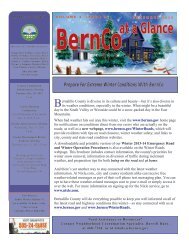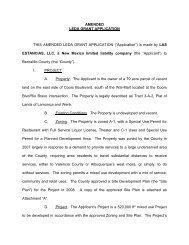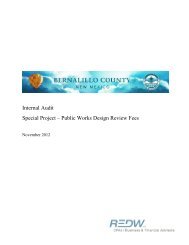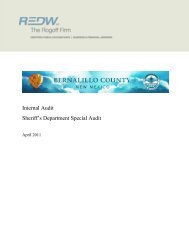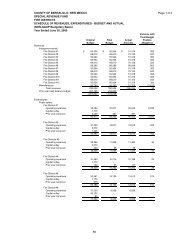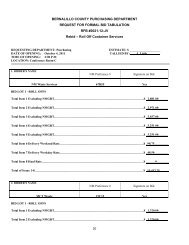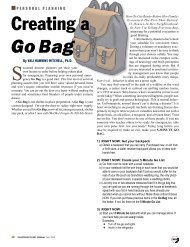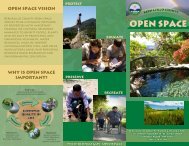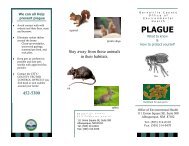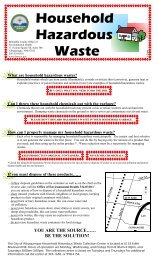Water Quality Protection Policy and Action Plan - Bernalillo County
Water Quality Protection Policy and Action Plan - Bernalillo County
Water Quality Protection Policy and Action Plan - Bernalillo County
- No tags were found...
You also want an ePaper? Increase the reach of your titles
YUMPU automatically turns print PDFs into web optimized ePapers that Google loves.
<strong>Water</strong> <strong>Quality</strong> <strong>Protection</strong> <strong>Policy</strong> <strong>and</strong> <strong>Action</strong> <strong>Plan</strong>Using the WUA data set, Dr. Kerry Howe conducted an independent review of key water quality<strong>and</strong> treatment issues associated with the WTP (Howe, 2009). While the investigation wasdesigned primarily to address issues associated with the WTP, some aspects of the studyprovide insight into the quality of the source water (that is, the quality of raw, or untreated,surface water). Specifically, Dr. Howe reviewed the following issues, with the following results(Howe, 2009):• The impact of upstream wastewater discharges on source water quality: Upstreammunicipal wastewater discharges have minimal impact on source water quality becausethe wastewater discharges are very small relative to typical discharge of the river,resulting in a large dilution effect.• The occurrence of radiological contaminants in source water: Radionuclides have beenfound in the Rio Gr<strong>and</strong>e at very low levels, almost always below SDWA levels;radionuclides in untreated surface water exceeded SDWA st<strong>and</strong>ards only twice duringthe entire 20-year period of record.• The occurrence of perchlorate in source water: Perchlorate is not regulated by theSDWA but may be in the future. Most samples analyzed for perchlorate were below thedetection limit, <strong>and</strong> the remaining samples "were about 200 times below the interimhealth advisory level."2.6 Threats to Surface <strong>Water</strong> <strong>Quality</strong>Threats to surface water quality can be classified as either a point source discharge or anonpoint source discharge. It is generally easier to identify <strong>and</strong> control the discharge qualityfrom point sources than it is from nonpoint sources; therefore, point sources are often bettercharacterized <strong>and</strong> regulated than nonpoint sources.For the purposes of this document, threats to surface water quality are grouped into thefollowing general categories (Table 2):• Stormwater discharges in the Albuquerque/<strong>Bernalillo</strong> <strong>County</strong> area• Treated wastewater effluent discharges in the Albuquerque/<strong>Bernalillo</strong> <strong>County</strong> area• Discharges to source waters upstream from the Albuquerque/<strong>Bernalillo</strong> <strong>County</strong> area• Nonpoint sources (including sediment input, surface flows from on-site wastewatertreatment <strong>and</strong> disposal systems, <strong>and</strong> irrigation return flows)• Other sources (including hazardous spills, agricultural return flows, etc.)14 Section 2



